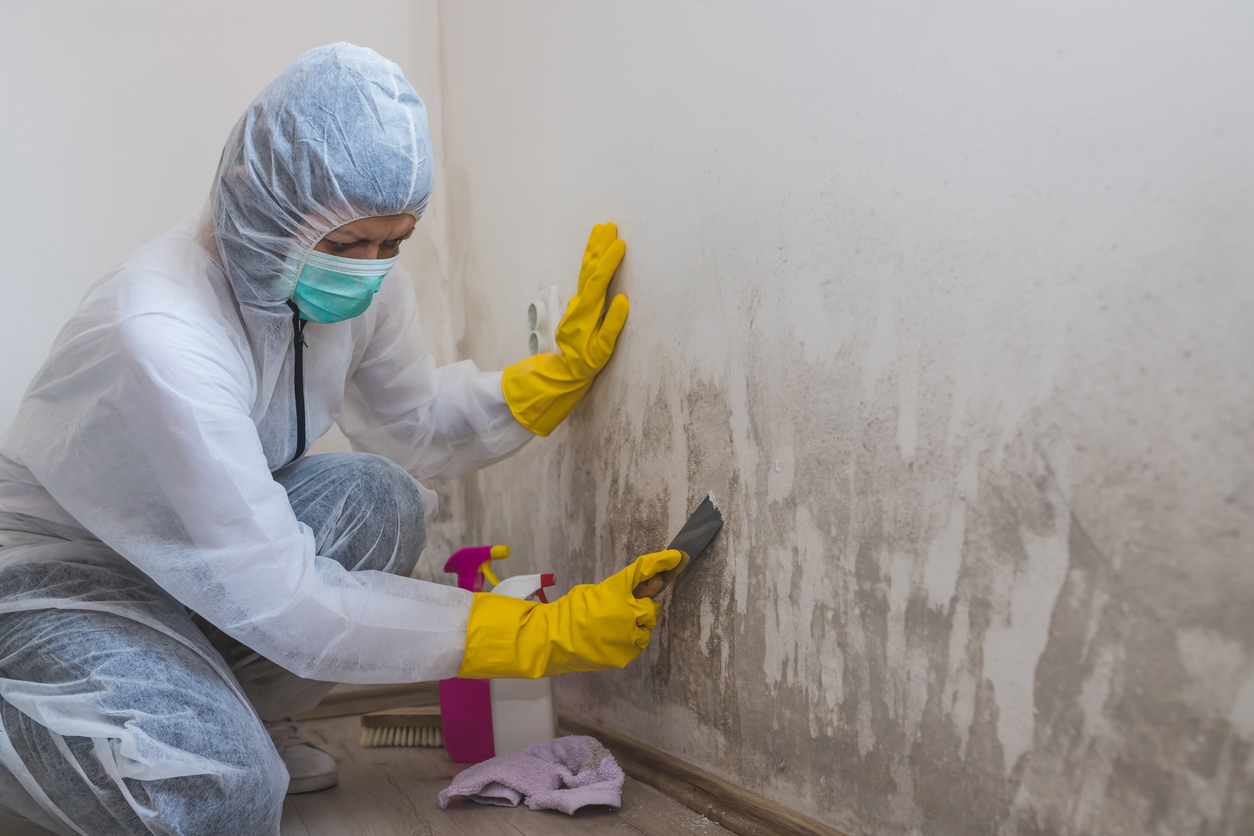
Working on a job and you discover mold and mildew? You can clean the surface, but you must proceed with caution. While mold and mildew can spoil drywall and rot timber, the spores can be bad for your health.
Here’s how to keep your crew safe while removing mold and mildew.
Start by looking at your local regulations for cleaning mold and mildew. If the affected area is too big, you may have to call in a specialist crew. If you are dealing with a manageable amount, follow the local regulations for mold removal. Here’s some general tips:
- Seal the room by hanging heavy plastic over doorways and taping windows.
- Install a box fan in one widow with the air venting outdoors to remove spores as fast as possible.
- Suit up with an N-95 or P-100 respirator, goggles, gloves and a disposable hazmat suit you can pull over your clothing.
- Damp down moldy surfaces with a spray bottle of water to prevent spores from escaping.
- Turn off the AC or furnace and seal any vents to prevent the spores from moving to other areas of the building.
- Remove any drywall and building materials that are affected by the mold or mildew and place in plastic bags which are sealed.
- Remove any insulation and carpeting or other flooring that has mold or mildew growing on it.
- Bleach doesn’t kill mold spores, so a strong soapy solution can be used to clean up whatever mold remains after demo.
- Once all the moldy materials have been removed and the remaining surfaces washed, remove your hazmat suit and place it in a plastic bag.
- Leave the room to dry completely, using a dehumidifier to remove any latent moisture.
- Find the source of the moisture and remediate the issue before continuing with your reno.
- Once the room has been properly dried and all timber has a maximum moisture of 15%, you can proceed with the reno.
- Mold-preventing primer and paint should be used in this room to prevent any remaining spores from taking hold.
